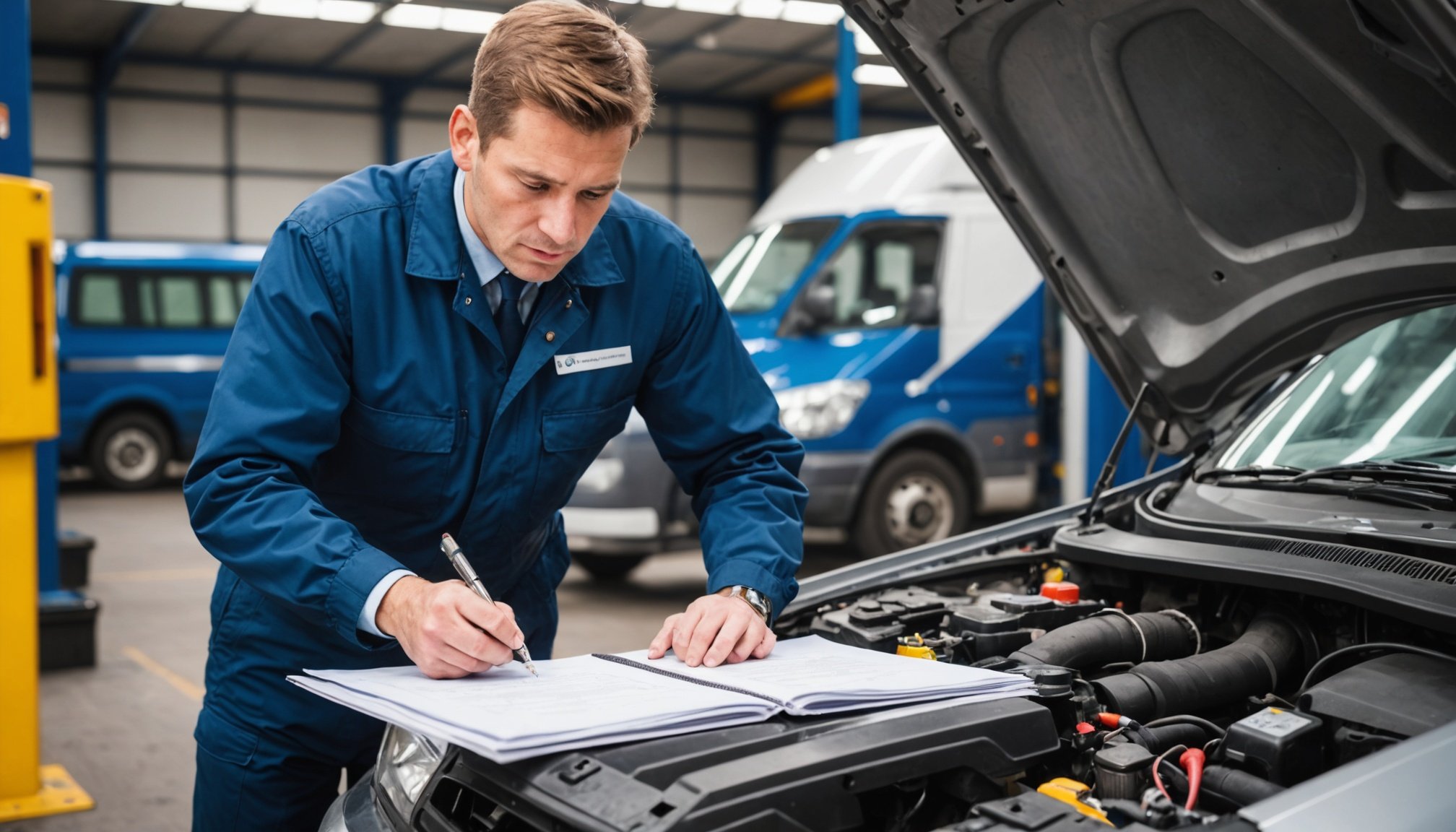Ensuring the safety and roadworthiness of vehicles is paramount for every driver on the road. In the UK, legal requirements surrounding vehicle safety inspections are set to protect not only the drivers but also other road users. These inspections help identify potential hazards and ensure that vehicles meet the necessary safety standards. This article serves as a comprehensive guide on the legal requirements for vehicle safety inspections in the UK, detailing the inspection process, the importance of regular checks, and the responsibilities of vehicle operators.
Understanding Vehicle Inspection Requirements
In the UK, vehicle safety inspections are governed by specific legal requirements that ensure roadworthiness. All motor vehicles over three years old must undergo an annual MOT test. The MOT test is a legal requirement that checks various components of the vehicle, including brakes, lights, steering, and emissions. This test is crucial not just for compliance, but also for maintaining the safety of the vehicles on the road.
Also to see : How can I choose the safest car for my family without breaking the bank?
The MOT test is conducted by licensed test centers operated by qualified operators. During the inspection, a series of checks are performed to ensure that the vehicle meets the minimum safety standards set by the government. If the vehicle fails the MOT, it is the responsibility of the operator to carry out necessary repairs before the vehicle can be legally driven again on public roads. The test results are documented, and a certificate is issued upon passing, which is valid for one year.
Apart from the MOT, there are additional inspections that certain vehicles may require based on their usage. For example, commercial vehicles or those used for public transport must adhere to stricter guidelines, including the annual roadworthiness tests. These tests are part of a wider system designed to ensure that all vehicles are safe and fit for their purpose.
In parallel : How can I effectively communicate with other drivers to enhance safety?
As a driver, understanding these requirements is essential. Regular inspections not only help in passing the MOT but also extend the life of your vehicle and enhance safety on the roads. Drivers must keep track of their MOT renewal dates and ensure that all necessary checks are performed on time.
The Importance of Routine Checks and Maintenance
Routine checks and maintenance are critical to ensuring that your vehicle remains safe and compliant with the law. While the MOT test is a mandatory requirement, it only reflects the vehicle’s condition at the time of inspection. Maintenance should be an ongoing process, ensuring all components function correctly throughout the year.
Regular checks should include monitoring fluid levels, tire pressure, and the condition of brakes and lights. These key components significantly affect the vehicle’s performance and safety. For instance, under-inflated tires can lead to reduced control and increased stopping distances, particularly under adverse weather conditions. Similarly, worn-out brake pads can compromise the vehicle’s stopping power, posing a serious risk to the driver and other road users.
Moreover, keeping a service history can be beneficial not only for passing inspections but also for resale value. Potential buyers are often more inclined to purchase a vehicle with a documented maintenance history, showcasing that it has been taken care of. Operators of commercial vehicles must adhere to more stringent maintenance schedules, often required by law, to ensure the safety of passengers and other road users.
In summary, regular maintenance and checks should not be viewed merely as a chore; they are essential elements of responsible vehicle ownership. By treating your vehicle well and keeping it in good condition, you not only comply with legal standards but also enhance your overall driving experience.
The Role of the Vehicle Operator in Safety Inspections
The role of the vehicle operator is vital when it comes to ensuring safety and compliance with inspection requirements. Whether you are an individual driver or a fleet manager, understanding your obligations under UK law is crucial.
As a vehicle operator, you are responsible for ensuring that all vehicles in your care undergo the necessary inspections and maintenance. This includes keeping track of MOT dates, scheduling routine checks, and addressing any issues that arise during inspections. Failure to comply with these obligations can result in legal penalties, including fines and possible bans from operating the vehicle.
For businesses, adherence to inspection schedules is even more critical. Operators of commercial vehicles must ensure that their fleet meets all safety standards to safeguard employees and the public. Regular staff training on the importance of vehicle safety can foster a culture of responsibility. Drivers should be encouraged to report any irregularities promptly, ensuring that issues are addressed before leading to more significant problems.
In addition to legal obligations, a good safety record can enhance your business reputation. Clients and customers are more likely to trust a company that demonstrates a commitment to safety and compliance. Maintaining high safety standards helps to minimize the risk of accidents, protects your assets, and ultimately saves costs associated with breakdowns and legal disputes.
In conclusion, as a vehicle operator, your responsibilities extend beyond just ensuring vehicles are roadworthy. Proactively managing inspections, maintenance, and compliance not only fulfills legal requirements but also contributes to safer roads for everyone.
Consequences of Neglecting Inspections
Neglecting vehicle inspections can lead to severe consequences, both legally and practically. As a driver, failing to ensure that your vehicle is roadworthy can result in penalties, accidents, and increased insurance costs.
Firstly, if your vehicle fails an MOT and you continue to drive it, you are breaking the law. This can lead to fines and points on your driving license. In some cases, the penalties can escalate, resulting in court appearances and substantial fines. Additionally, driving a vehicle that is not properly maintained can lead to breakdowns, which not only inconvenience you but can also pose safety risks to yourself and others on the road.
Moreover, neglecting regular maintenance can compromise vehicle performance. For instance, an undiscovered mechanical issue might worsen over time, leading to more expensive repairs and potentially catastrophic failures. Accidents resulting from mechanical failure can also significantly increase insurance premiums, adversely affecting your financial standing.
For commercial operators, the stakes are even higher. A failure to comply with inspection regulations can lead to a company’s license being revoked, disrupting operations and incurring substantial financial losses. Furthermore, if a vehicle involved in an accident is found to be unroadworthy, the consequences can include hefty liability claims, further emphasizing the importance of rigorous safety checks.
In summary, the consequences of neglecting inspections extend beyond legal penalties; they can have significant implications for safety, finances, and overall vehicle performance. As responsible drivers and operators, prioritizing vehicle inspections is essential for sustaining a safe driving environment.
In conclusion, understanding the legal requirements for vehicle safety inspections in the UK is essential for all drivers and operators. Regular inspections, including the MOT test, play a crucial role in ensuring that vehicles remain safe and compliant with the law. By prioritizing routine maintenance and checks, you enhance the safety of your vehicle, contribute to the well-being of all road users, and avoid the potential legal repercussions of neglecting these essential protocols. Embracing a culture of safety not only fulfills your legal obligations but also promotes a safer driving experience for everyone on the road.










